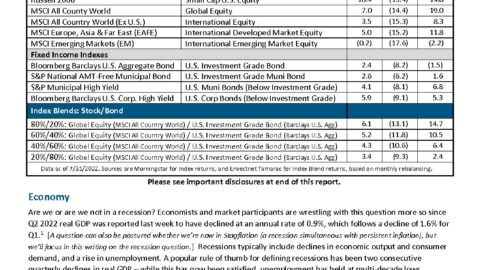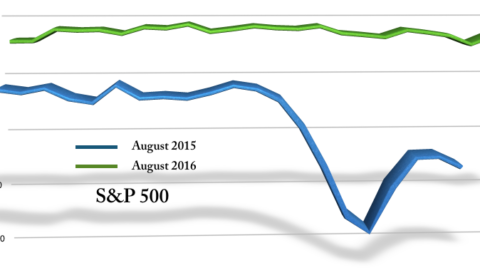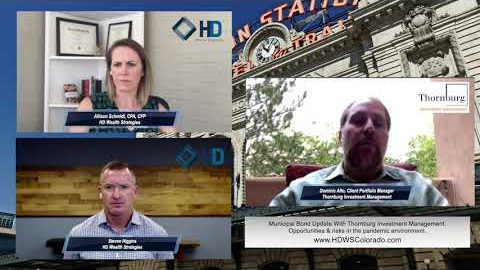Inflated Expectations
A Cause for Concern or Optimism?
 By Steven Higgins, Financial Advisor, Principal
By Steven Higgins, Financial Advisor, Principal
Holy smokes! 2016, in contrast to 2015, was anything but boring. It all started last January. The first trading day of the year saw the market roll over and play dead. We experienced one of the most significant stock corrections since 2008.* Some stock indexes were down over 20%. With the year just beginning, many people were thinking that there was no hope for the rest of their year. Well, the markets started to dig their way out and by the end of March, the S&P 500 was capturing new highs. The summer started with little excitement and people seemed happy enough that the markets were slightly positive for the year.
At the end of June our vocabularies all got an upgrade and “Brexit” became a household term. There was a populist movement growing in the U.K. There was a very vocal group of people fed up with the United Kingdom’s role in the European Union, or I guess I should say the European Union’s role in Great Britain. Among the chief points of pain were monetary policy and immigration issues.

As the “Brexit” vote neared it seemed likely that the vote to allow Parliament to begin the process of exiting the European Union was destined to fail. However, as the voting polls closed late in the evening on June 26th, it was clear that there was significantly more energy behind “Brexit” than previously thought. Over 33 million people voted in the referendum. 51.89% voted to leave the EU versus 48.11% who voted to stay.
Curiously, an hour after voting ended, the two top Google searches in the United Kingdom were “What is Brexit?” and “What is the European Union?” The markets were shocked. Here in the U.S. the S&P 500, a broad measure of U.S. stocks, dropped by over 5% in just two days. Within a week the market had recaptured all of those losses and began a trek to set new all time highs.
By mid summer we were in the midst of the most unique presidential election cycle in many many years. Donald Trump, the unlikely candidate who had been written off as something of a sideshow when announcing his candidacy a year earlier, was systematically working his way through a crowded field of Republican opponents. As the conventions neared it was apparent that Donald Trump would be the Republican Party’s nominee for president. Hillary Clinton, who to many felt like an incumbent candidate, represented what was tried and true for many Democrats. While Hillary Clinton did face some pretty fierce primary competition from Bernie Sanders, it did appear from many a poll and pundit alike that she was on her way to being the next president of the United States.
As Election Day neared, we felt like there was a looming tension about to be relieved. There were so many strong things going on in this country that simply weren’t being talked about because a positive story did not fit the narrative of either candidate. And, with the drama and spectacle of the reality show of an election that was going on, who needs facts? While we did not know who would win the election, we were confident that there was some pretty serious positive pressure building in the markets. Here’s a clip from our pre-election video:
It seems everybody who was supposed to know anything was dead wrong about everything. Late Tuesday night, when it appeared an upset was looming, DOW Industrial Average futures had dropped over 800 points! Donald Trump won the election and the stock markets went up. Some stocks were up more than others. To close out 2016, small cap stocks measured by the S&P 600 small cap index, gained 26%, while the S&P 500, a broad measure of large companies gained 12% while bonds as measured by the AGG had a slight gain of 2.41%.
When we look at the entire year of 2016 we see two very different stories from the beginning to the end with all kinds of drama in between. At the end of the day, balanced portfolios generally did reasonably well, especially with the beginning of the year taken into consideration.
The more important question is… Where are we headed next?
In my opinion, so much of the news cycle these days is focused on the reality show that is Washington D.C. Unfortunately, people have created a sense of greed or fear based on their level of approval of what is going on in politics. While people have very strong feelings about policy changes, executive orders, and Saturday Night Live, it seems as though the collective “us” is missing some pretty important pieces of information that just are not sexy enough to grab the headlines. 
Economically, 2009 was a major economic inflection point. The only time in our nation’s history that we even came close to deploying more resources was in World War II. To give you an idea, it took 233 years for the U.S. to create a money supply of $7 trillion dollars. In just eight years, from 2009 through 2016, the U.S. created another $7 trillion of money supply. Through programs like TARP and the bond buying programs called quantitative easing or “QE,” the U.S. created enough dollars that placed end to end could reach to the sun over seven times. With interest rates at record lows, you would have thought that all this new cash would be flooding the streets. In my opinion, the problem was that interest rates stayed too low for too long. Banks because of painfully low rates were unwilling and (and with the help of new regulations) unable to take much risk at such low rates. So, the money just sat there.
One way to think of this massive money reserve is to think of it as a reservoir of water filled to the top with waves lapping over the edge of the dam. To be sure, you don’t want to be in the wrong place if that thing starts to break. So in this analogy, who are the people that are in the low lying areas below the dam? The people who are potentially at risk are people who have the majority of their money in assets that are unable to rise with inflation. Specifically, bonds, fixed annuities, cash, and cash like instruments can be risky to own in periods of inflation and rising interest rates. What is particularly scary is that many people own these assets for predictability. What is predictable is that if “predictable” assets make up too much of your portfolio, you may be at a disadvantage if inflation and rising interest rates persist.


Inflation: A Way to Turn Dollars Into Cents… Permanently
It might sound as if we are very optimistic about owning stocks and growth assets. I’m not sure if opportunistic is the right word. We are advising that clients have an appropriate amount of assets that can correlate positively to inflation. So, I would say we are advising clients own assets like quality stocks in the same way someone climbing a mountain to avoid a flood is going for a hike. It is not because you want to; rather, because you have to. As financial planners we understand that the cost of living plays an incredibly powerful role in our client’s ability to meet their long term goals. Over the last ten years inflation has been much less a part of our economic narrative than it had been in the past. Since 1913, when the U.S. government started keeping track of inflation, the average inflation rate averaged 3.3%. For the last 10 years we have averaged just 1.8%. That may not seem like a big difference, but let’s take a look at the impact of inflation on lifestyle.
Inflation is powerful and something you don’t want to miss. If a Starbucks latte that costs $4 today inflates to over $9 in 10 years, and there’s not much chance it costs $4 ever again. Let’s look at America’s best selling car, the beloved automotive appliance, the Toyota Camry. Today, a mid level version will run about $26,000. In one decade with 1970’s style inflation, you would pay $60,000 for that dream machine. Imagine this, with 30 years of inflation similar to that between 1960 and 1990, a Toyota Camry would cost $112,000 dollars. In other words, between 1960 and 1990, a dollar in your hand became 23 cents.
 There are two ways to look at how monetary policy and stimulus affected the slower than expected economic recovery after the Great Recession in 2008 and 2009. First, you could argue that it just did not work…end of of story, period. You would make the case that the U.S. more than doubled the national debt and increased the mon
There are two ways to look at how monetary policy and stimulus affected the slower than expected economic recovery after the Great Recession in 2008 and 2009. First, you could argue that it just did not work…end of of story, period. You would make the case that the U.S. more than doubled the national debt and increased the mon ey supply measured by M2 by 100%. Over the same period of time, the unemployment rate was cut in half from 10% to 5%, and the collective companies in the S&P 500 saw their earnings go up by over ten times from the recession lows. All to net 1.8% inflation per year and GDP growth of 1.16%, just one third of historical averages of 3.3%.
ey supply measured by M2 by 100%. Over the same period of time, the unemployment rate was cut in half from 10% to 5%, and the collective companies in the S&P 500 saw their earnings go up by over ten times from the recession lows. All to net 1.8% inflation per year and GDP growth of 1.16%, just one third of historical averages of 3.3%.
Or, you could argue that the game is not over. The intent of this type of monetary policy is to create inflation in the economy. Inflation makes asset prices rise. As the prices of goods and services rise, business cash flow increases, payrolls increase, and the economy as measured by the Gross Domestic Product (GDP) increases. Well, this is obviously not an exact science. I remember when I was young, around the 4th of July some kid would get his hands on some illegal fireworks; the kind of fireworks that could do some damage. We would carefully light the fuse, then flee to a safe distance as we anticipated the crack of the tiny piece of dynamite exploding. Every now and then, there wouldn’t be an explosion, just silence, then we would convince some idiot to go check it out. Picking up that little bomb was nerve racking just to watch (I wasn’t the idiot.) I did see one go off in a kid’s hand once. Nevertheless, sometimes things go off later than you expect.
Remember the $7 trillion dollars we added to the money supply? It’s still there, like a vat of fuel sitting next to the campfire. Needless to say, the plan was to meter this money out over a period of time; however, the global monetary system (primarily an untimely European interest rate phenomenon) kept the fuel from getting deployed in an orderly fashion. So what is it going to take to release this historically massive amount of cash? First, increasing interest rates will allow banks to adjust lending standards to take more risk and increase personal and commercial lending. Second, President Trump has made “deregulation” one of his hallmark issues. The Dodd-Frank Wall Street Reform and Consumer Protection Act of 2010 has consistently been a target of President Trump and repealing it or revising it will certainly take the teeth out of many of the restrictions placed on banks, specifically with regard to limits on commercial lending. So, if low interest rates combined wth burdensome regulation were the things holding banks back, watch out.
 If that were not enough of a case for the coming wave of inflated growth, consider some of the other potential policies and changes. Lowering the corporate tax rate would encourage companies who have an estimated $2.5 trillion dollars (14% of the U.S. economy) overseas in tax havens like Ireland to bring that money back to the U.S. Additionally, any kind of infrastructure program like airports, bridges, roads, walls, moats, or dungeons would put pressure on an already “full” employment market causing a spike in wages and costs. We have not even mentioned a potential tax break for individuals and families. Every policy and campaign promise is pointing to inflation. If President Trump is the spark, then President Obama was the fuel. At first, people will argue who gets credit for the growth, then history will debate who was at fault for the high inflation. The argument is pointless. Every president wants to see economic growth. The reality is, we are looking at the real possibility of a delayed and compacted reaction of collective efforts.
If that were not enough of a case for the coming wave of inflated growth, consider some of the other potential policies and changes. Lowering the corporate tax rate would encourage companies who have an estimated $2.5 trillion dollars (14% of the U.S. economy) overseas in tax havens like Ireland to bring that money back to the U.S. Additionally, any kind of infrastructure program like airports, bridges, roads, walls, moats, or dungeons would put pressure on an already “full” employment market causing a spike in wages and costs. We have not even mentioned a potential tax break for individuals and families. Every policy and campaign promise is pointing to inflation. If President Trump is the spark, then President Obama was the fuel. At first, people will argue who gets credit for the growth, then history will debate who was at fault for the high inflation. The argument is pointless. Every president wants to see economic growth. The reality is, we are looking at the real possibility of a delayed and compacted reaction of collective efforts.
Politics has a way of distracting us from what is important. Letting politics be your financial advisor did not work for “anti-Obama” folks in 2008 as stocks were sitting at 50% losses about the time President Obama was sworn in. Now it’s 2017, President Trump was just sworn in, and we hear all sorts of competing investment predictions about President Trump’s positive or negative impact on the markets. In my opinion: inflation and interest increases are coming. The timing is anybody’s guess, but they are coming nonetheless. The period ahead may be marked by increased volatility, as is common in inflationary environments. There may be times investors feel like they need to seek safety only to find the security of the harbor was no match for the tsunami. This is a time for investors, both retirees and pre-retirees, to gain an acceptance and understanding of how a diversified portfolio and normal volatility can help you reach your goals. I’m sure at some point, probably soon, we’ll have a correction. Maybe Mexico will try to leave North America, we’ll call it, “Mexcit.” That would certainly shake up the markets! (remember you heard that here first) Just remember, this ride will be volatile and that volatility will be necessary. Investors should be sure they understand what risks they are taking in their portfolio and financial plan. Maybe it is time to take that hike to higher ground. Happy trails!
*Financial Sources: www.yahoofinance.com & www.tradingeconomics.com
The content is developed from sources believed to be providing accurate information. The information in this material is not intended as tax or legal advice. Please consult legal or tax professionals for specific information regarding your individual situation. The opinions voiced in this material are for general information only and are not intended to provide specific advice or recommendations for any individual. All performance referenced is historical and is no guarantee of future results. All indices are unmanaged and may not be invested into directly. The opinions expressed in this material do not necessarily reflect the views of LPL Financial. The economic forecasts set forth in this material may not develop as predicted and there can be no guarantee that strategies promoted will be successful. This is a hypothetical example and is not representative of any specific situation. Your results will vary. The hypothetical rates of return used do not reflect the deduction of fees and charges inherent to investing. There is no guarantee that a diversified portfolio will enhance overall returns or outperform a non-diversified portfolio. Diversification does not protect against market risk. The prices of small and mid-cap stocks are generally more volatile that large cap stocks. Stock investing involves risk including loss of principal. Bonds are subject to market and interest rate risk if sold prior to maturity. Bond values will decline as interest risk if sold prior to maturity. Bond values will decline as interest rates rise and bonds are subject to availability and change in price. Fixed annuities are long-term investment vehicles designed for retirement purposes. Gains from tax-deferred investments are taxable as ordinary income upon withdrawal. Guarantees are based on the claims paying ability of the issuing company. Withdrawals made prior to age 59 are subject to a 10% IRA penalty tax and surrender charges may apply. The Standard & Poor’s 500 Index is a capitalization weighted index of 500 stocks designed to measure performance of the broad domestic economy through changes in the aggregate market value of 500 stocks representing all major industries. The Dow Jones Industrial Average is comprised of 30 stocks that are major factors in their industries and widely held by individuals and institutional investors.








